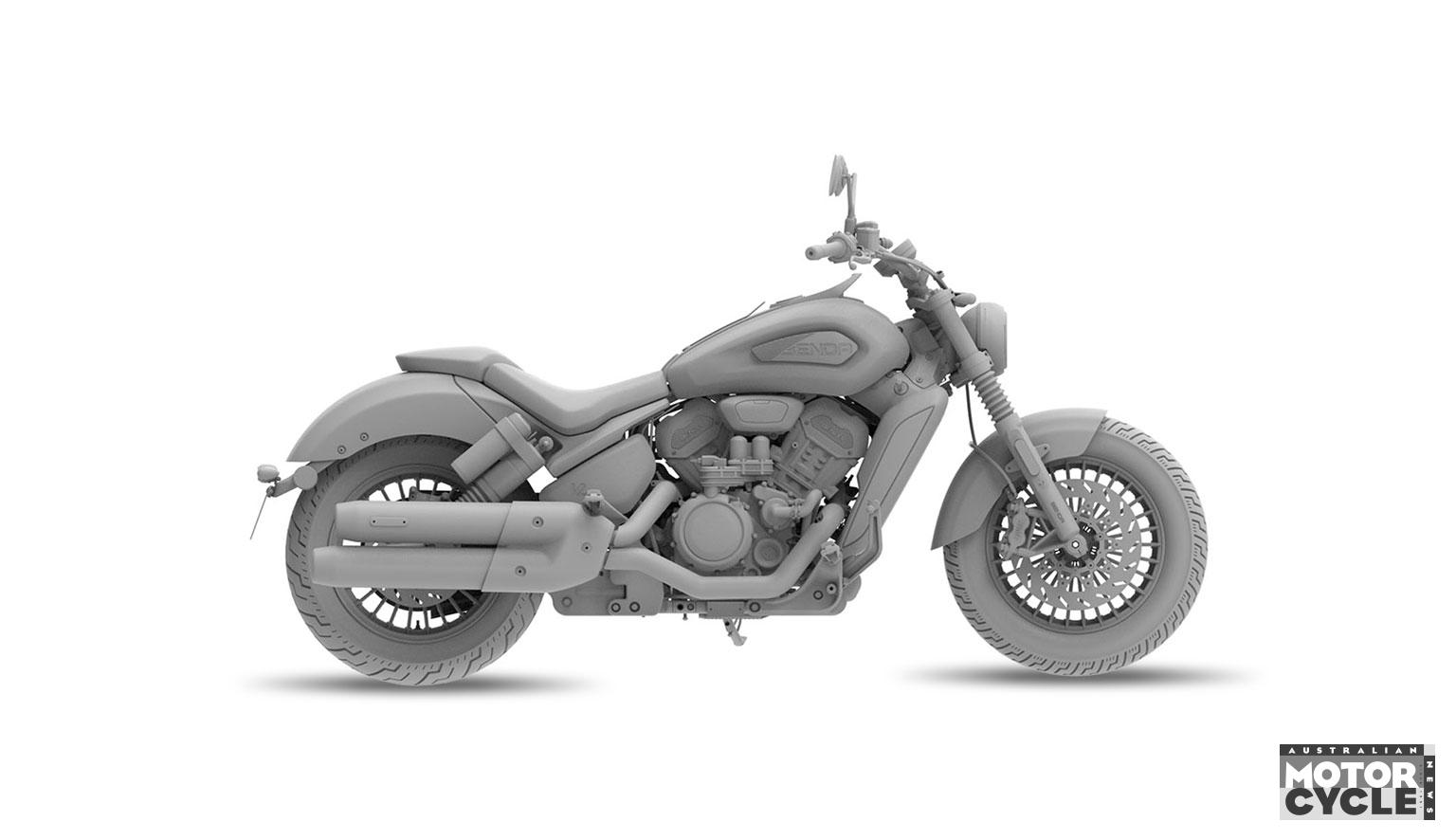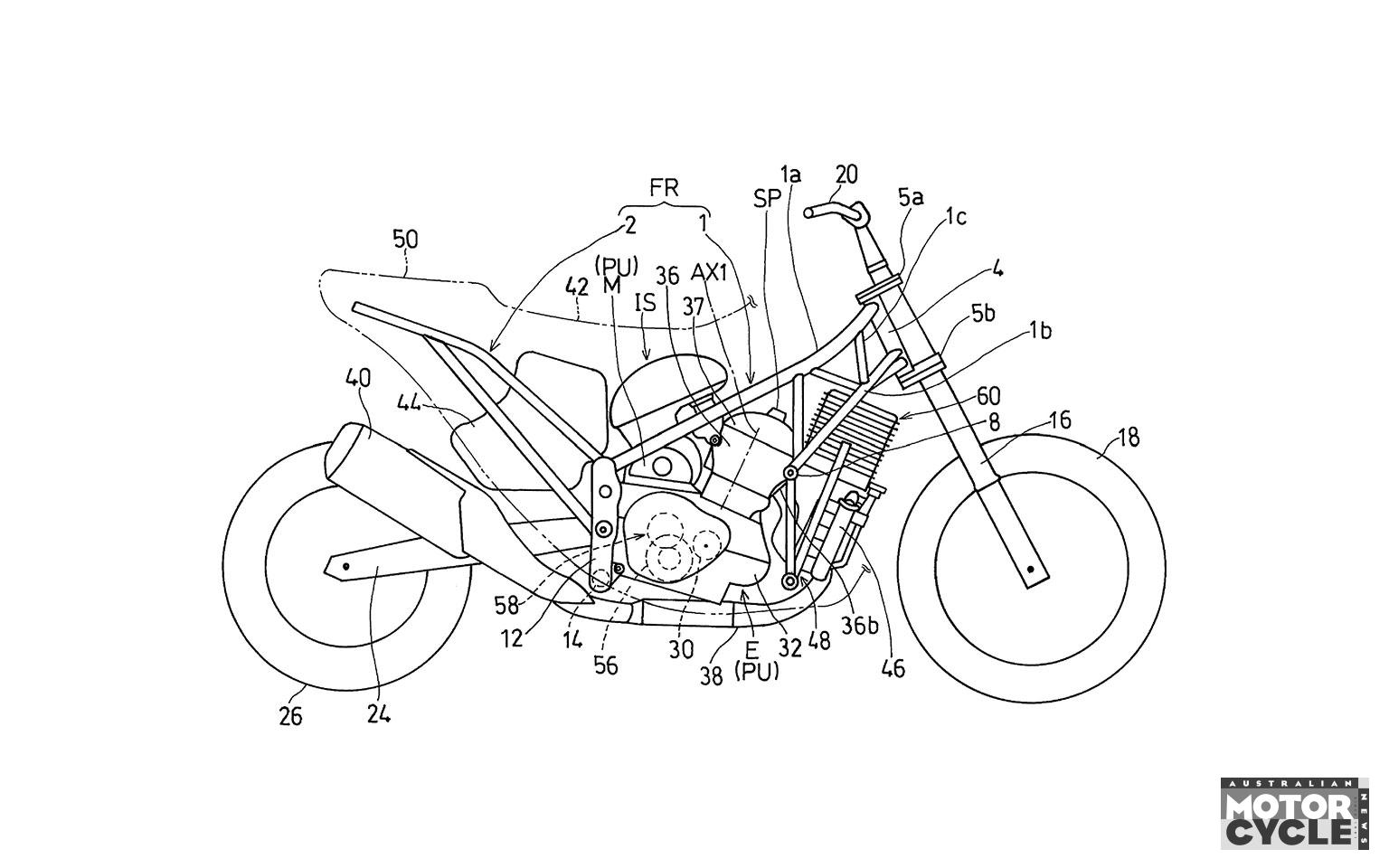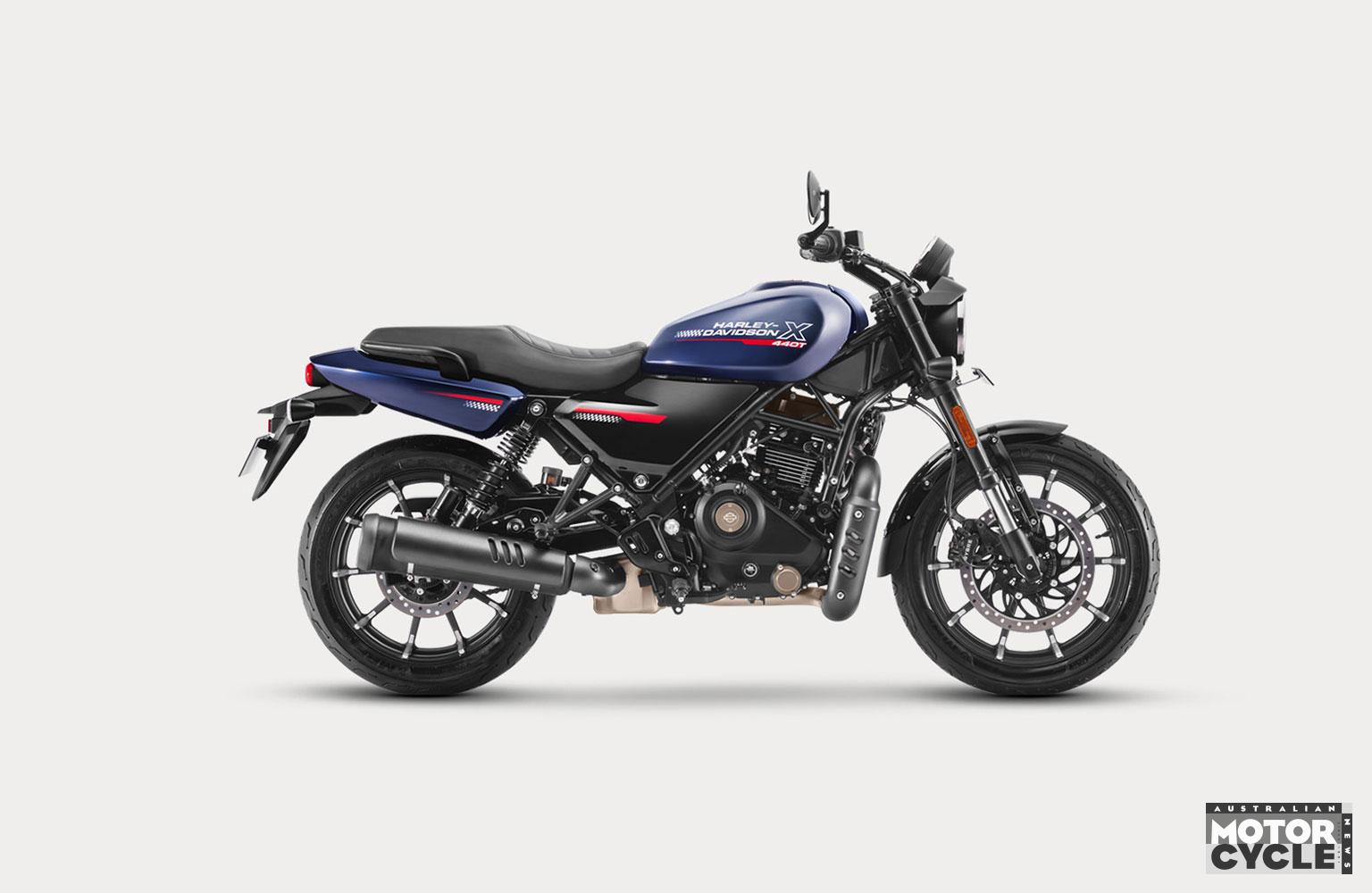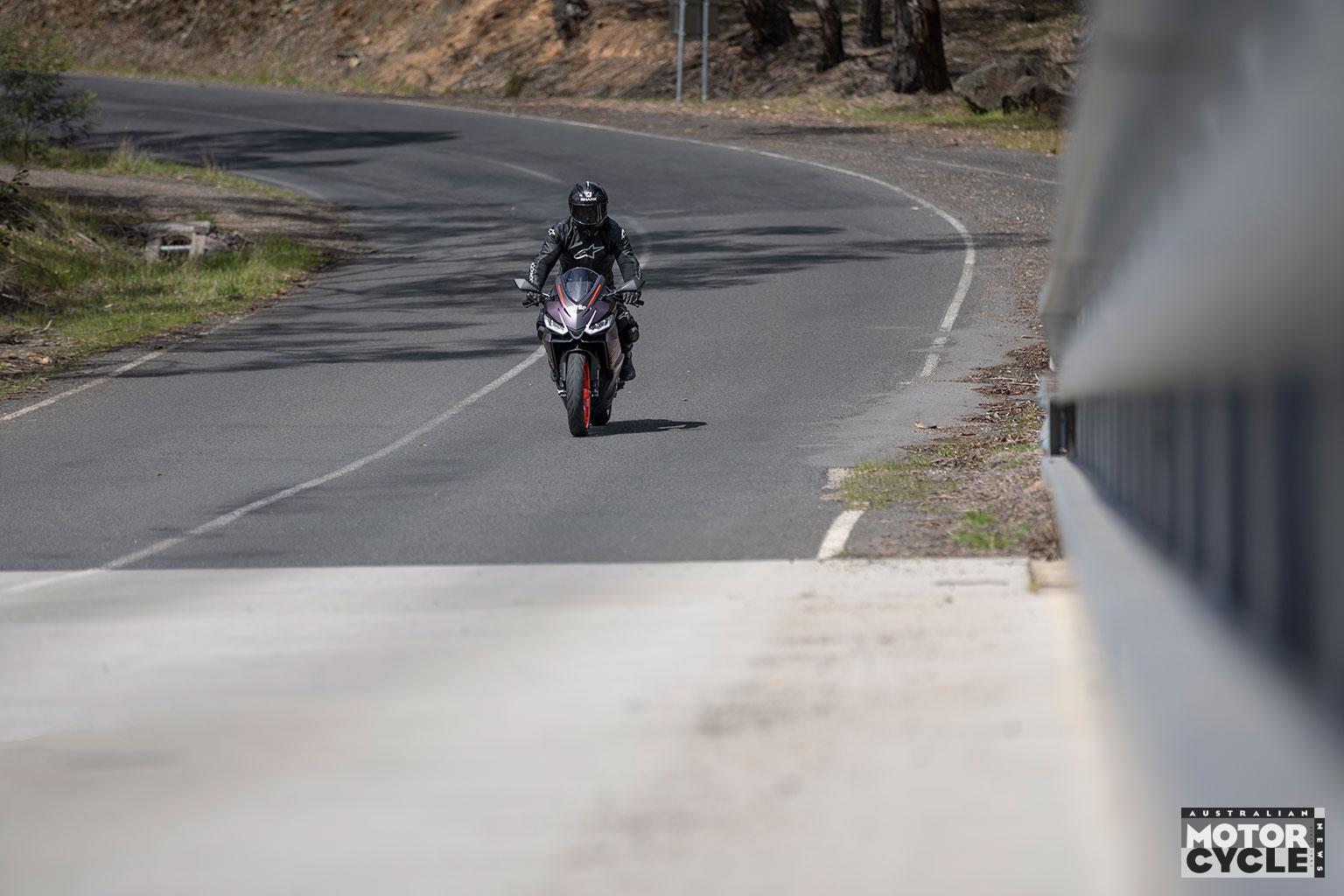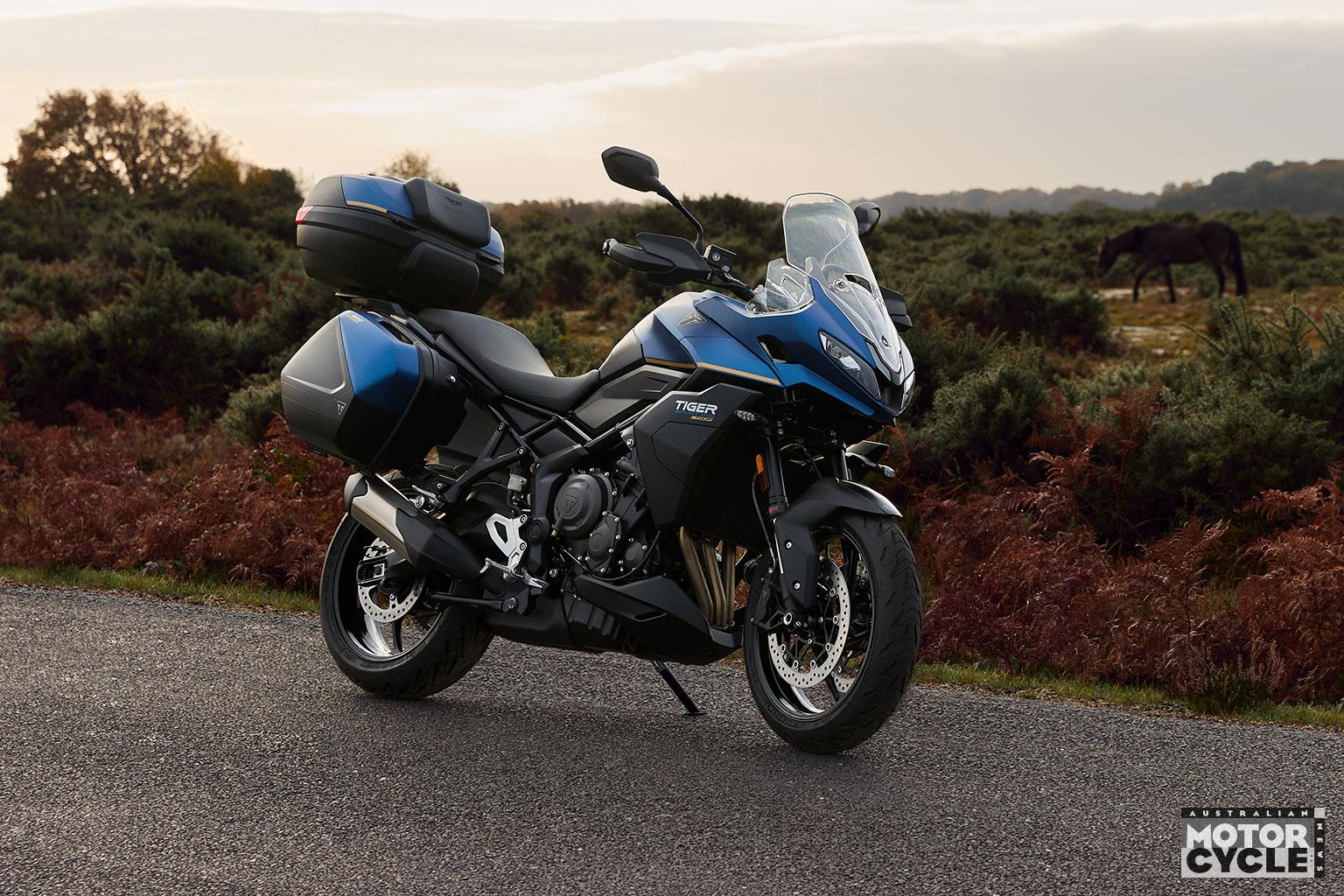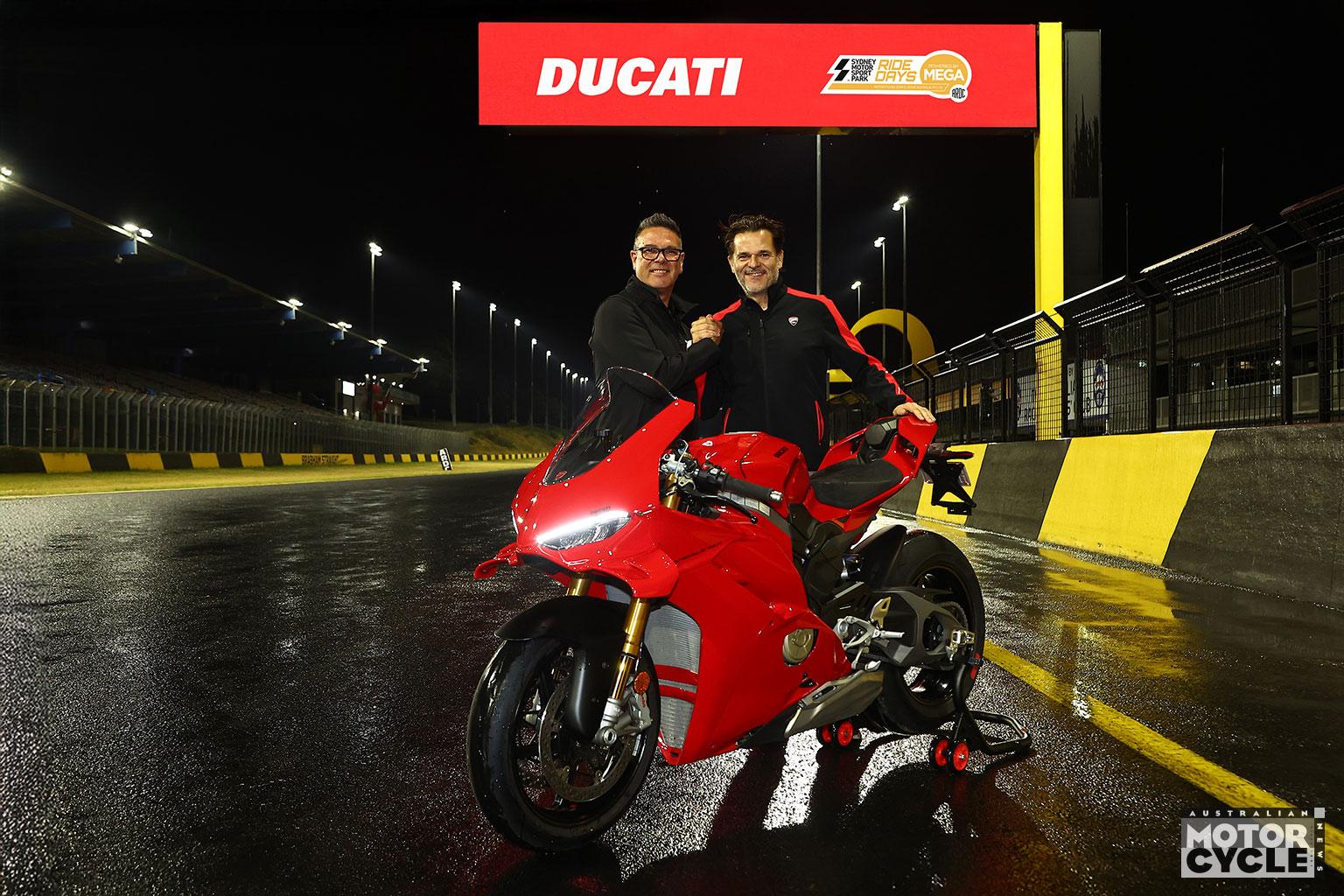Four-wheel simulators are quite common, and because of the standardisation of control, they’re relatively easy to build. To control a car, you sit in a seat and swing a steering wheel around a single axis that directly correlates
with the angle you need the vehicle to go in, while accelerating and braking by actuating foot pedals.
Motorcycle simulators are a bit harder to create. Not only because their wheels stay in line when they’re turning corners above a certain speed, but they’re then required to lean over, which reduces the radius of the tyre in order to get them to turn corners. As well as that, they require speed and centrifugal force to stop the machine from wanting to continue to fall all the way to the ground.
Add to this the fact that handlebar input below a certain speed requires direct input (that is, steer left to go left) but once above a certain speed an opposite force is required (steer right to go left) and all of a sudden creating an effective and accurate motorcycle simulator gets shuffled into the too-hard basket.
However, a Dutch-based mob that specialises in simulators reckons they’ve created one that is as close as you can get to riding a motorcycle in its natural environment while not putting yourself at the risk of crashing.
Amsterdam-based company Cruden, which has created simulators for the automotive and marine industries, is responsible for the whole kit and caboodle, including hydraulics that simulate movement, the audio-visual hardware, control software and gathering the content making up the tracks, their surfaces and the environment the user seemingly passes through.
It’s a little more complex than the sit-on motorcycle racing video game in your local arcade – in fact there’s a whole swathe of tech that sets Cruden’s B306-HMD motorcycle simulator apart.

Depth-map sensors
Depth-map sensors is what Cruden says it does best. So while other simulators might rely on weight sensors in the footpegs or seat in order to get a read on what the rider’s body is doing, the Cruden system continuously monitors the user’s exact position and alters the bike accordingly, however insignificant the change may be.
Motion system
The hydraulically operated motion system mimics not only the bike’s steering as it leans left and right to go through corners, but it will squat under hard acceleration, dive under braking and, using a six-axis system, imitate the exact movements of a motorcycle in any road or track situation depending on the input.
Steering actuator
A lot of the way we steer and control a motorcycle happens without us consciously thinking about it. If we had to consciously countersteer every time we jumped on a motorcycle we’d be wobbling all over the place. With clever software and a stiff 50Nm of steer torque, the actuator effectively facilitates counter-steering capabilities.

Audio and visual
You can have the best simulator in the world, but if it doesn’t look and sound convincing, it’s not much chop. A rider is far more immersed than a driver in the environment, so Cruden developed a head-mounted virtual-reality display to provide a better field of view. Unlike a conventional screen, it responds to head rather than bike movements.
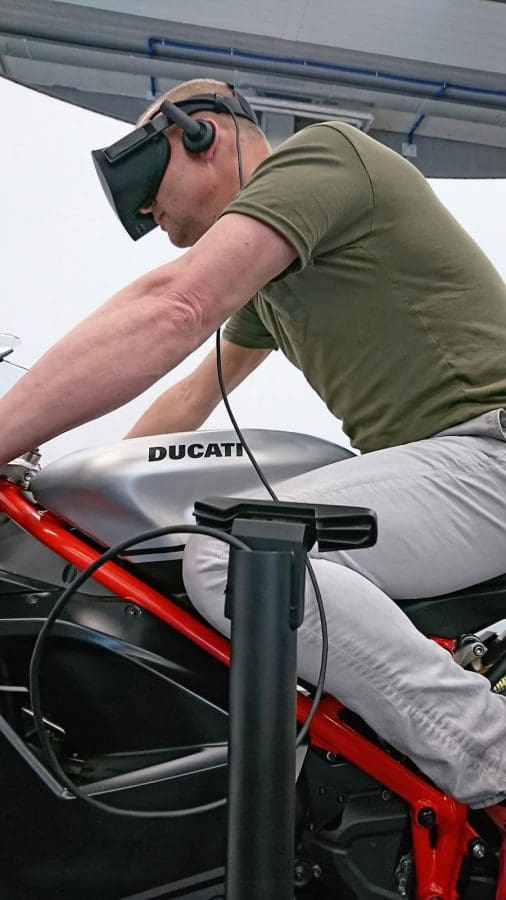
By Kel Buckley
